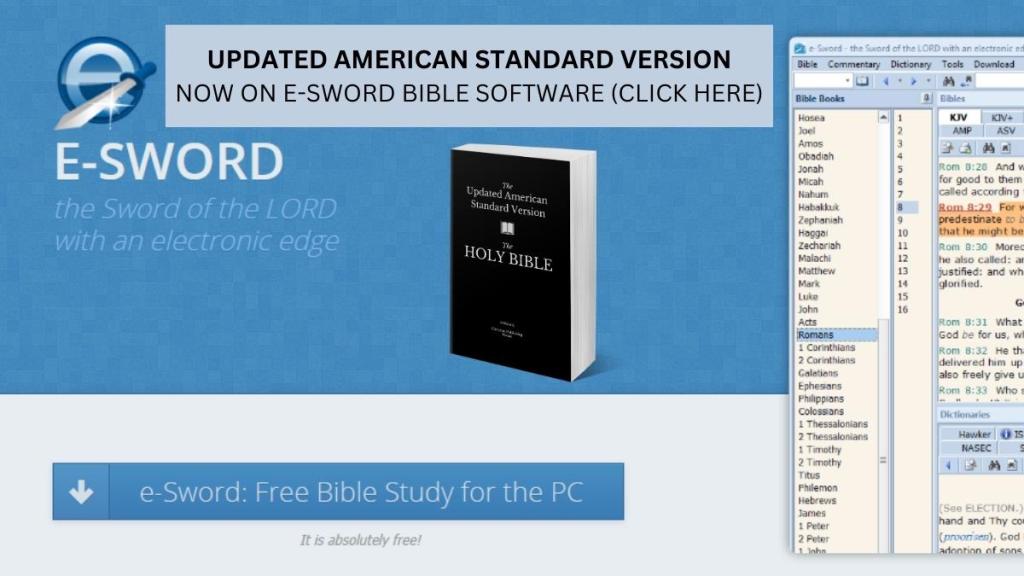
Please Help Us Keep These Thousands of Blog Posts Growing and Free for All
Moses, in penning Genesis, presents the account as being historically true. However, the scholarship that has produced what is known as the Documentary Hypothesis, biblical criticism, says not only did Moses not even pen any of the first five books of the Bible, but that this account was written hundreds of years after him, and is completely fabricated. [See The Documentary Hypothesis—Defending Moses’ Authorship of the Pentateuch]
It is true that we have very little archaeological evidence that can settle this as being a true historical account. What reason is offered to see it otherwise? Do we rightly dismiss an account because we have not found evidence of such? To do so, would be a serious indication of bias against the Bible, nothing more. We look at all the other writings of the Ancient Near East as evidence of historical events, but the manuscripts of the Old Testament are not viewed in the same light.
However, we do have indirect support from noted scholars H. Gunkel and W. F. Albright conclude, “In spite of our failure hitherto to fix the historical horizon of this chapter, we may be certain that its contents are very ancient. There are several words and expressions found nowhere else in the Bible and now known to belong to the second millennium. The names of the towns in Transjordania are also known to be very ancient.”[1] Therefore, we have no sound reasons for dismissing this for anything other than an authentic historical account of Abram defeating the Mesopotamian kings by way of the most high God.
Furthermore, the names of Elamite kings have been discovered on archaeological engravings. A number of them begin with the expression “Kudur,” similar to “Chedor.” An important Elamite goddess was Lagamar, similar to “laomer.” Hence, Chedorlaomer is now recognized by some secular sources as a historical ruler, his name possibly meaning “Servant of Lagamar.” Gleason L. Archer writes, “The likelihood of a Chedorlaomer, king of Elam, more recent discovery has shown that an Elamite dynasty did indeed establish a temporary over-lordship in Sumer and Akkad, and that some of these kings had names beginning with “Kudur” (“servant”), and that there was an Elamite goddess named Lagamar. Thus, a king Kudur-lagamar may well have participated in this invasion. It is stated in one tablet (Barton, AB, p. 349) that a king named Kudur-Mabug had a son named Eri-aku (or else his name could be read Arad-Sin, “Servant of the moon-god”), and that he was king of Larsa—very close to “Arioch king of Ellasar” (Gen. 14:1). The Mari Tablets also attest the currency of the name Ariyuk. (So Albright in Rowley, OTMS, p. 6.) A Babylonian wagon contract dating from a time shortly after Hammurabi stipulates that the wagon hired must not be driven to the coast of the Mediterranean (indicating that wagons could indeed be driven to Palestine in those days). (Cf. Barton, AB, p. 347.) The net result of all this archaeological confirmation of the agreement of Gen. 14 with conditions existing in that period has been to convince Gunkel, Albright, and many others, that this episode rests upon authentic tradition perhaps going back to the twentieth century B.C.[2]
One set of Babylonian engraving has names similar to three of the invading kings—Tudhula (Tidal), Eri-aku (Arioch), and Kudur-lahmil (Chedorlaomer). (Genesis 14:1) In the book Hidden Things of God’s Revelation, Dr. A. Custance says, “Besides these names were details which seemed to refer to the events which transpired in Babylonia when the Elamites established their sovereignty over the country. . . . So confirmatory of Scripture were these tablets that the Higher Critics jumped on them and did everything in their power to deliberately suppress the significance of them.”[3]
[1] H. C. Alleman and E. E. Flack (eds.), Old Testament Commentary, p. 14.
[2] Gleason Archer Jr., A Survey of Old Testament Introduction, 3rd. ed. (Chicago: Moody Press, 1994), 177–178.
[3] Hidden (Volume 7) – Part IV, CH.1 (June 13, 2017) http://custance.org/Library/Volume7/Part_IV/Chapter1.html
Please Help Us Keep These Thousands of Blog Posts Growing and Free for All
SCROLL THROUGH DIFFERENT CATEGORIES BELOW
BIBLE TRANSLATION AND TEXTUAL CRITICISM
BIBLICAL STUDIES / INTERPRETATION
EARLY CHRISTIANITY
CHRISTIAN APOLOGETIC EVANGELISM
TECHNOLOGY
CHRISTIAN THEOLOGY
TEENS-YOUTH-ADOLESCENCE-JUVENILE
CHRISTIAN LIVING
CHRISTIAN DEVOTIONALS
CHURCH ISSUES, GROWTH, AND HISTORY
Apocalyptic-Eschatology [End Times]
CHRISTIAN FICTION
Like this:
Like Loading...






































































































































































































Leave a Reply